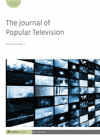
Full text loading...
 , Maria-Jose Masanet1
, Maria-Jose Masanet1
Teen series play a central role in the socialization process of young people, since they offer portrayals and models that young people can relate to, identify with or modify and break. Previous studies have shown that teen series continue to perpetuate a stereotyped gender representation and usually reproduce a heteronormative relationship model based on the myth of romantic love following the storyline of ‘Beauty and the Beast’. The present study consists of a close reading of three popular current Netflix teen series: 13 Reasons Why (2017–present), Élite (2018–present) and Sex Education (2019–present). The results show an inversion of the gender archetypes of Beauty and the Beast. The three female protagonists are ‘badasses with a good heart’, embodying the typical archetype of the ‘Beast’, while the three male protagonists are patient, caring, innocent and even virginal, embodying the archetype of the ‘Beauty’. However, unlike in the classic model, the boys fail in their attempts to save their beloved from themselves, and the girls end up suffering irreparable consequences. The tragic end of the female characters condemns them to the impossibility of a redemption that has traditionally been granted to males.

Article metrics loading...

Full text loading...
References


Publication Date:
https://doi.org/10.1386/jptv_00061_1 Published content will be available immediately after check-out or when it is released in case of a pre-order. Please make sure to be logged in to see all available purchase options.